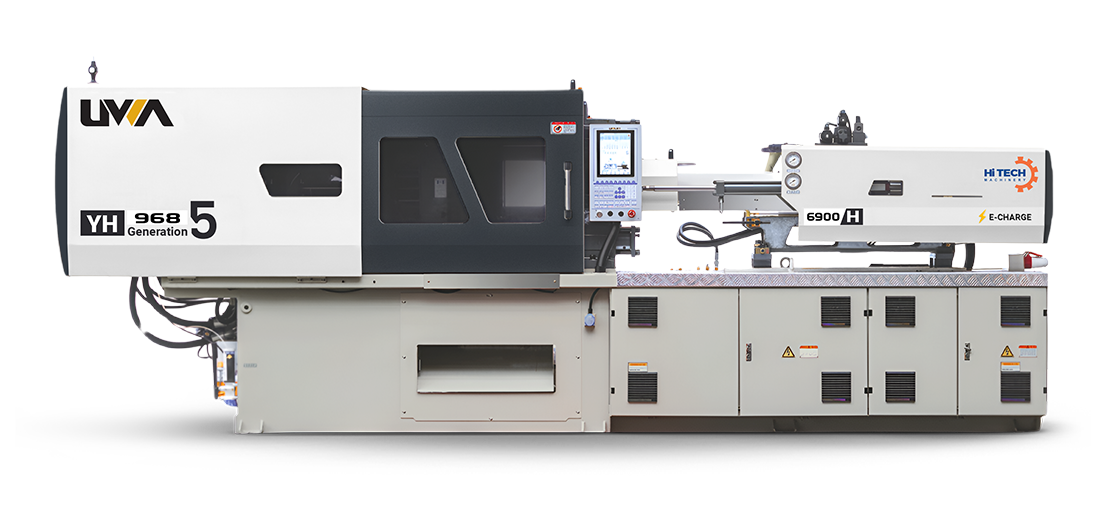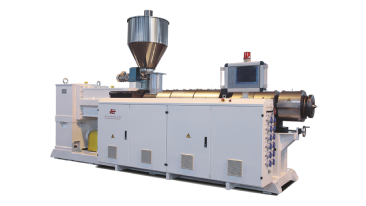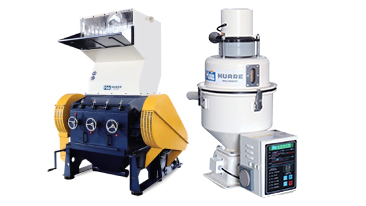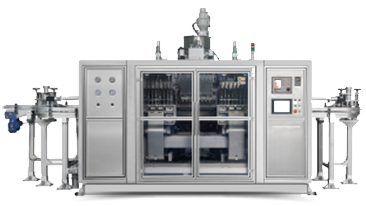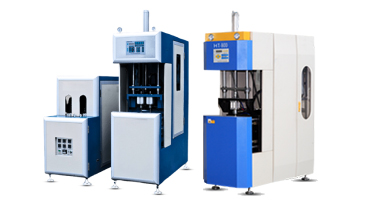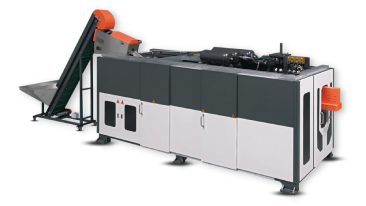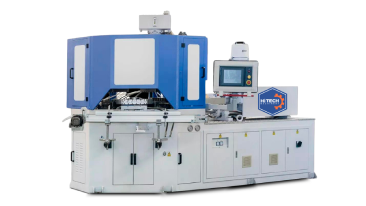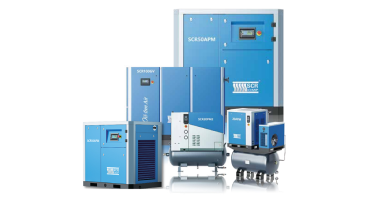In plastics, there’s such a wide range of product options that one often gets confused about where to begin. The first things most people picture are toys, bottles, or maybe automotive parts – and that’s natural, because everyone knows these.
But our focus today is on a simple yet very useful item. Its market size and everyday use are underrated, which is why it’s rarely considered a local business opportunity.
This blog revolves around the cable tie – how to start its manufacturing, what challenges to expect, and how profitable this business idea can be.
An Overview of Cable Tie
Back in 1956, Maurus C. Logan visited a Boeing facility and noticed workers with injured hands from tying wax-coated nylon cords around cable bundles. That observation gave him the idea of the modern cable tie, also known as Zip Tie, Tie Wrap, or Ty-Rap
A cable tie is a self-locking nylon fastener designed to bundle wires, pipes, or objects together.
Its basic parts include:
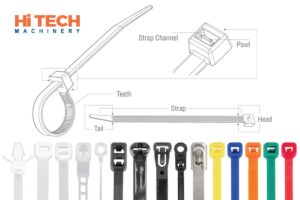
- Head: The main locking unit.
- Tail: The extended strip that loops around.
- Pawl: The small tooth inside the head that locks against serrations on the tail, allowing it to tighten but not loosen.
Most cable ties we see are made from Nylon 6/6 (Polyamide), which provides strength, durability, and flexibility. However, depending on the application, they are also manufactured in Polypropylene (for chemical resistance), ETFE (for extreme conditions), and Stainless Steel (for heavy-duty or outdoor use).
Cable Tie Global and Local Market
Around 182 billion cable ties were produced globally in 2024, and the market value stood at over USD 1,479 million. If we break it down by usage, Electronics leads the chart with 46 billion pieces, followed by Automotive (31 billion) and Packaging (21 billion). As the world moves further into tech-based infrastructure and industries, this demand is only expected to rise.
Now, let’s look at local demand, specifically in Pakistan. Ironically, most of our domestic consumption still depends on imports – primarily from Taiwan, China, Germany, and the US. Among these, Taiwanese cable ties are considered the most reliable in the local market and hence have a strong presence.
These imported zip ties are available in different sizes, usually in packs of 50, 100, or more. On average, the cost of a 6-inch cable tie is around Rs. 3 per unit. But if the same tie were produced locally using high-speed injection molding machines, the cost could ideally fall between Rs. 1 and 1.5 per unit/piece. That’s a significant cost advantage, which makes local manufacturing a very viable business idea.
What are the Challenges in Making Cable Ties Locally?
If local manufacturing is cheaper and the potential is big, why then are we still relying heavily on imports?
There are a few reasons:
- Lack of Awareness: Many businesses are simply unaware that cable tie manufacturing is a strong opportunity.
- Outdated Machinery: Some manufacturers may attempt production with older injection molding setups, which don’t match the required speed and precision.
- Material Challenges: Apparently, this seems to be one of the biggest technical barriers.
An issue reported by the few manufacturers who have tried producing locally is the peculiar behavior of Nylon in our climate. Locally produced nylon cable ties tend to become brittle after molding and break very easily.
The concern is actually valid because nylon is hygroscopic in nature, which means it absorbs and retains moisture. Without adequate moisture, nylon loses flexibility and becomes fragile. In Pakistan’s hot and dry climate, this effect is amplified, leading to premature cracking.
A solution that some experienced manufacturers have shared is adding moisture to packaging (~2–2.5% moisture content). Another suggestion is to let products equilibrate in a controlled-humidity room (24–48 hours can be typical). The key point is the care in packaging, and if that’s done in an automated and controlled manner, the product stays durable for a long time.
How are Cable Ties Made?
Cable ties are an injection molding product, which makes them relatively simple to manufacture once the right setup is in place. Plastic granules are first dried in a hopper dryer to remove moisture, then transferred into the screw barrel of the molding machine. Inside the barrel, the material is melted and injected into a precision mold containing multiple cavities.
In a single molding cycle, multiple ties are produced simultaneously, commonly 24, 32, or more, depending on the mold design and the machine’s clamping force. Because of the short cycle time and high cavity molds, hundreds of thousands of cable ties can be produced in a single day.
What You Need to Set Up a Cable Tie Manufacturing Business?
 Got a hint of the setup from the process above? Let’s break it down in detail.
Got a hint of the setup from the process above? Let’s break it down in detail.
1. Multi-Cavity Mold
The mold is the heart of production. Your cavity count will depend on machine size and output targets. Standard designs include 24, 32, 50, 60, or even 80 cavities, but custom designs are often preferred to match specific tie sizes.
2. High-Speed Injection Molding Machine
The injection molding machine drives the process. For cable ties, you’ll need a high-speed model with enough clamping force to handle multi-cavity molds. Typically, this means machines above 200 tons.
3. Auxiliary Machinery
Injection molding doesn’t work in isolation. You’ll also need the following auxiliaries to run a complete setup:
- Granulator: Recycles rejected or leftover plastic parts into reusable granules.
- Auto Loader: Transfers raw plastic granules into the hopper automatically.
- Hopper Dryer: Removes moisture from the raw material to prevent defects.
- Industrial Chiller: Keeps mold and product cool for stable cycle times.
- Mold Temperature Controller (MTC): Maintains consistent mold temperature for better product quality.
- Air Compressor: Powers pneumatic functions of the molding machine and auxiliaries.
4. Auto Packing Machine
As mentioned earlier, packing is one of the most significant challenges in cable tie manufacturing. That’s why a fully automatic packing machine is recommended, which handles this entire process without manual intervention. It consists of devices for automatic feeding, full-shot importing of cable ties, cutting, grabbing, and bagging. The system also includes bag-picking, bag-sealing, and exhaust mechanisms to ensure every pack is air-tight.
5. Tensile Testing Machine
Cable ties must be strong enough to withstand pull forces without breaking or slipping. A tensile testing machine is used to measure this strength accurately. This guarantees you’re shipping reliable products that can handle their intended load without failure
6. Visual Inspection (Optional)
A visual inspection system automatically detects defects such as flash around the head, body, or tail, and identifies short shots with an accuracy of ±1 mm. If a defect is found, the machine rejects the entire shot rather than individual parts, preventing sub-standard products from reaching the market.
How to build a Profitable Cable Tie Manufacturing Business?
Demand is strong and competition is limited, which makes cable ties a great opportunity to build and scale a business. But the real challenge lies in managing costs and pricing – both in making and selling. Before cost, first, let’s look at the production estimates:
Production Capacity Estimate
| Metric | Value |
| Cycle Time | 14 to 16 seconds |
| Mold Cavities | 60 |
| Ties per Second | 3.75 to 4.28 |
| Cable Ties per Hour | 13,500 to 15,428 cable ties |
| Cable Ties per Shift (8 hrs.) | 108,000 to 123,428 cable ties |
| Cable Ties per Day (24 hrs) | 324,000 to 370,285 cable ties |
Example: A 167*2.5*0.96 mm cable / 6-inch cable Tie
We have taken the above size as a reference for our calculation. Although this may not represent the exact cost, since material, electricity, and other expenses vary significantly, the breakdown provided gives you a clear framework for how to calculate your own costs.
| Calculation | |
| Cable Tie Size | 167 × 2.5 × 0.96 mm (6-inch) |
| Estimated Weight | 0.457 grams |
| Nylon 6/6 Cost per Kg | $2.10 – $4.00 |
| Raw Material Cost per Tie | Rs. 0.27 – 0.510 |
| Energy Consumption (All equipment) | 114.45 kWh @ Rs. 60 per kWh |
| Electricity Cost per Tie | ≈ Rs. 0.51 – 0.64 per tie |
| Packaging Cost per Tie | ≈ Rs. 0.10 |
| Total Estimated Cost | ≈ Rs. 0.88 – 1.25 |
| Imported Cable Tie Price | Rs. 3 /- unit |
Expected ROI
The total cost of this whole cable tie setup is around $205,000, which is approximately 57.7 million PKR. Based on the production estimates, the machine can produce between 324,000 and 370,000 cable ties per day on a full 24-hour run. Even at a conservative 16-hour daily operation, output still reaches around 216,000 cable ties per day.
With a unit cost of Rs. 1.25 and a selling price of Rs. 3.00, the margin per tie remains strong. In theory, the investment could be worth 4 to 6 months of consistent production.
Of course, market realities are more complex. Establishing sales channels, developing a reliable distribution network, and gradually scaling customer demand all take time. Factoring these in, a cautious projection would extend the payback period to 18 to 24 months.
How HiTech Machinery Can Help You Start Cable Tie Manufacturing?
From the initial idea to a fully running setup, HiTech Machinery has you covered. We don’t just supply plastic injection molding machines; we provide complete support services to ensure your project succeeds.
- Local warranty
- On-site installation & operator training
- 24/7 technical support
- Spare parts and maintenance assistance
- Reliable after-sales service
So, if you’re interested in setting up a cable tie production line, get in touch with HiTech Machinery today, and take the next step towards spreading Made in Pakistan across industries worldwide.

